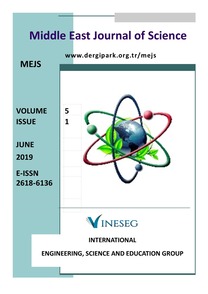INCUBATION SHARING OF NORTHERN BALD IBIS (Geronticus eremita) PARTNERS
___
[1] Böhm, C., Bowden C.G.R., Seddon, P.J., Hatipoğlu, T., Oubrou, W., El Bekkay, M., Quevedo, M.A., Fritz, J., Yeniyurt, C., Lopez, J.M., Orueta, J.F., Didone, F., Unsöld, M., ”The northern bald ibis Geronticus eremita: history, current status and future perspectives”, Oryx, 55(6), 1-13, 2020.[2] Böhm, C., “The Northern bald ibis EEP – an overview.”(In: Eds. Böhm, C., Bowden, C., Jordan, M.)Northern bald ibisconservation and reintroduction workshop. IAGNBI Meeting Innsbruck 2003), 2003, pp.33-35
[3] Böhm, C.,”Der Waldrapp – eine (un)endliche Geschichte? Aktueller Status im Freiland und in Zoos, Schutzprojekte – eine aktuelle Übersicht”, Zeitschrift des Kölner Zoos., 62(2), 107-123, 2019.
[4] Unsöld, M., Fritz, J., “Methodik der Wiederansiedlung von sedentären und Migrierenden Waldrapp-Populationen“, Vogelwarte 56, 402-403, 2018.
[5] Bowden, C.G.R., Aghnaj, A., Smith, K.W., Ribi, M., ”The status and recent breeding performance of the critically endangered Northern Bald Ibis Geronticus eremita population on the Atlantic coast of Morocco”, Ibis, 145, 419-431, 2003
[6] Bowden, C.G.R., Smith, K.W., El Bekkay, M., Oubrou, W., Aghnaj, A.,Jimenez-Armesto, M., "Contribution of research to conservation action for the Northern bald ibis Geronticus eremita in Morocco”, Bird Conservation International, 18, 74-90, 2008.
[7] Sikli, L., Oubrou, O., El Bekkay, M., “Morocco wild population update” (in eds. Böhm, C., Bowden, C.G.R.:Northern Bald Ibis Conservation and TranslocationWorkshop. Report of 4th. International Advisory Group for the Northern Bald Ibis (IAGNBI) meeting Seekirchen, Austria, August 2016, pp 29-30
[8] Akçakaya, H.R., “Bald Ibis Geronticus eremita population in Turkey: an evaluation of the captive breeding project for reintroduction”, Biological Conservation, 51, 225-237, 1990.
[9] Akçakaya, H.R., Akçakaya, R., Barış, Y.S., “Birecik’teki Kelaynak (Geronticus eremita) populasyonunun yok olma nedenleri ve koruma çalışmalarının değerlendirilmesi.,” Doğa-Turkish Journal of Zoology, 16, 1–12, 1992.
[10] Arıhan, O., “Recent information on the occurrence of the Northern Bald Ibis Geronticus eremita in Turkey”, Turna, 1(1), 10-15, 1998.
[11] Şahin, R., “Kelaynak Kuşlarının (Geronticus eremita) Davranış ve Biyolojileri” Habilitation. Dicle University, Diyarbakır, Turkey. 1980.
[12] Şahin, R., “Erfolgreiche Volierenbrut der Waldrappen in der Türkei“, Ornithologische Mitteilungen, 32, 72-74, 1980.
[13] Kılıç, A., “Kelaynak Kuşunun (Geronticus eremita) Türkiye’deki Durumu“ (oral presentation). In, Biyoçeşitlilik Sempozyumu, 22-23 May Şanlıurfa, Turkey, 2015, pp.63.
[14] Kılıç, A., “Reproduction Success in the Birecik Northern Bald Ibis (Geronticus eremita)”, Journal of Applied Biological Sciences, 9 (1), 6-10, 2015.
[15] Unsöld, M.,Fritz,J.,“Die Rückkehr des Waldrapps“, Falke, 61(7), 27–29, 2014.
[16] Chernetsov. N., Berthold, P.,Querner, U., ”Migratory orientation of first-year white Storks (Ciconia ciconia): inherited information and social interactions”, Journal Experimental Biology, 207, 937-943, 2004.
[17] Serra, G., Lindsell, J.A., Peske, L., Fritz, J., Bowden, C.G.R., Bruschini, C., Welch, G., Tavares, J., Wondafrash, M., “Accounting for the low survival of the Critically Endangered northern bald ibis Geronticus eremita on a majör migratory flyway”, Oryx, 49(2), 312-320, 2015.
[18] Holleis, A., Böhm, C., Landmann, A., “Treu sein oder nicht?-Partnerwahl und Partner Treue beim Waldrapp Geronticus eremita“, Vogelwarte, 47(4), 316-317, 2009.
[19] Şahin,R., “Zum Form der Ehe freilebender Waldrappen (Geronticus eremita) in Birecik (Türkei)“, Ornithologische Mitteilungen, 34, 162-163, 1982.
[20] Şahin, R., „Beitrag zum Fortpflanzungsverhalten der freilebenden Waldrappe (Geronticus eremita) in der Türkei, 2.Mitteilung: Paarung“, Ökologie der Vögel, 5, 63-72, 1983.
[21] Kılıç, A.,Uysal, E., Yüksel, F.M.“Kelaynak Kuşlarında Kuluçka Paylaşımı.“ 2. Ulusal Zooloji Kongresi, 28-31 Ağustos, Afyonkarahisar –Turkey, 2015, pp.3.
[22] Şahin, R., “Beitrag zum Fortpflanzungsverhalten der freilebenden Waldrappe (Geronticus eremita) in der Türkei. 3. Mitteilung: Eiablage, Brüten und Schlüpfen“, Ökologie der Vögel., 5, 255-262, 1983.
[23] Şahin, R., “Eltern-Kind-Beziehungen der freilebenden Waldrappe (Geronticus eremita) in Birecik (Türkei)“, Ökologie der Vögel, 4, 1-7, 1982.
[24] Çakmak, E., Akın Pekşen, Ç, Bilgin, C.C., “Comparison of three different primer sets for sexing birds”, Journal of Veterinary Diagnostic Investigation, 29, 59-63, 2017.
[25] Pegoraro, K.,“Der Waldrapp: vom Ibis, den man für einen Raben hielt.“AULA.Wiesbaden, Germany, 1996.
[26] Pegoraro, K., Föger, M., “Individuality in the Northern bald ibis or Waldrapp Ibis Geronticus eremita– key features for a complex social system”, Acrocephalus, 22, 73-79, 2001.
[27] Böhm,C., Pegoraro, K., “Der Waldrapp Geronticus eremita, Ein Glatzkopf in Turbulenzen.“ Verlags KG Wolf, 1. Auflage. Die Neue Brehm- Bücherei Bd 659, Westrap Wissenschaften Hohenwarsleben. Leipzig, Germany, 2011.
[28] Yeniyurt, C.,“Kelaynakların (Geronticus eremita) Birecik’teki 2013 Yılı Üreme Başarıları.“ 22. Ulusal Biyoloji Kongresi, 23-27 June, Eskişehir, Turkey, 2014, pp. 976.
[29] Özkınacı, G., Yeniyurt, C., “Kelaynakların (Geronticus eremita) Birecik’teki 2015 Yılı Üreme Başarıları.” XII. Ulusal Ekoloji ve Çevre Kongresi 14-17 September 2015, Muğla Turkey, pp.375.
[30] Kılıç, A., Uysal, E., “Assessment of the incubation period for each sex of Turkish semi-wild Northern Bald Ibis (Geronticus eremita)”, Turkish Journal of Zoology, 43, 617-627, 2019.
[31] Cramp, S., Simmons, K.E.L., The Complete Birds of the Western Palearctic, Oxford University Press CD-Rom, Oxford, UK. 1998.
[32] Kılıç, A., Uysal, E., Yüksel, F., “Kelaynak Kuşlarında (Geronticus eremita) Kuluçka Öncesi ve Yuva Kurma Davranışları”, Anadolu Doğa Bilimler Dergisi, 6(2), 175-183, 2015.
[33] Şahin, R., Biricik, M., Etoloji. Karşılaştırmalı Hayvan Davranışı Bilimi. Dicle Üniversitesi Basımevi, Diyarbakır, Türkiye, 1997.
[34] Immelmann, K., Wörterbuch der Verhaltensforschung, Parey, Berlin, Hamburg, 1982.
[35] Immelmann, K., Einführung in die Verhaltensforschung, Parey.3, neubearb.u.erw.Aufl. Berlin, Hamburg, 1983.
- ISSN: 2618-6136
- Yayın Aralığı: 2
- Başlangıç: 2015
- Yayıncı: -
Reşit ÇAKMAK, Ercan ÇINAR, Eyüp BAŞARAN, MEHMET BOĞA
IN-VITRO INVESTIGATION OF DONKEY MILK EFFICACY AGAINST STANDARD STAPHYLOCOCCUS AUREUS STRAINS
Mehmet DEMİRCİ, Serap KILIÇ ALTUN, Bekir Sami KOCAZEYBEK, Akın YİĞİN
THREE MSA TOOLS ANALYSIS IN DNA AND PROTEIN DATASETS
Fırat AŞIR, Tuğcan KORAK, Özgür ÖZTÜRK
BIOSENSOR PROPERTIES OF PLASMONIC SILVER NANOPARTICLES PRODUCED BY PLD
İlhan CANDAN, Serap YİĞİT GEZGİN, Yasemin GÜNDOĞDU, Hadice BUDAK GÜMGÜM
INVESTIGATION OF PLACENTAL HOFBAUER CELLS BY IMMUNOHISTCHEMSTRY METHODS IN COMPLICATED PREGNANCIES
Yusuf NERGİZ, Şebnem NERGİZ ÖZTÜRK, Fırat AŞIR, Ayşe ŞAHİN, Elif AĞAÇAYAK
BIOSENSOR PROPERTIES OF PLASMONIC SILVER NANOPARTICLES PRODUCED BY THE PLD MECHANISM
İlhan CANDAN, Serap YİĞİT GEZGİN, YASEMİN GÜNDOĞDU, Hadice BUDAK GUMGUM
INCUBATION SHARING OF NORTHERN BALD IBIS (Geronticus eremita) PARTNERS
ESTIMATION OF NEUTRONS OCCURRING IN THE LINAC ROOM AT DIFFERENTPHOTON ENERGIES
Halil İbrahim ÖNAL, Feyyaz DURAP
